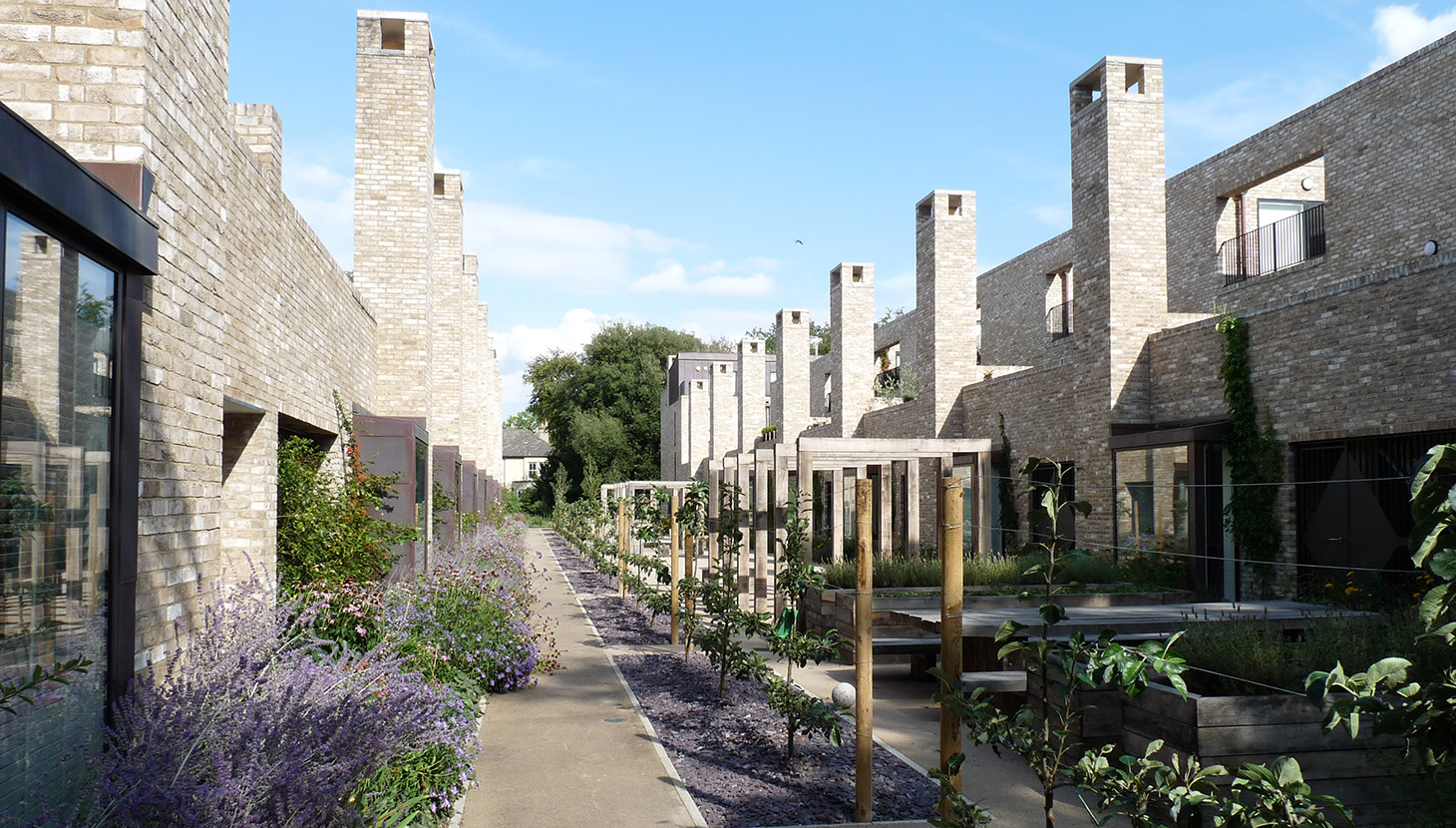You might have thought that being 700,000 homes short would constitute a crisis. Well, no it doesn’t! James Gross AoU finds out why when he speaks to economist and former member of the Bank of England Monetary Policy Committee Dame Kate Barker, 12 years on from her review of housing supply.

Dame Kate Barker
Given that Barker identified no less than 36 recommendations back in her 2004 review into housing, she’s not someone known to be short of an idea or two, so does she agree with the perception that we’re currently in a housing crisis? And having since joined the board of a UK national housebuilder in a non-executive capacity, what are her current views on a resurgence of more interventionist housing policies coming out of government?
Straight off the bat Barker is quick to point out that nobody, and certainly not government, has a clear idea of what a ‘repaired and functional’ housing market looks like and neither was this the objective of her 2004 review.
“When I wrote my review I wasn’t attempting to fix the housing market, I was doing something slightly constrained for the treasury, which was answering the questions a) what rate of new supply would we need so we don’t have house prices rising continually faster than income or rising over cycles, and b) can you think of policy changes that would help us to push the rate of housing supply up towards that?”
The policy recommendations identified by Barker assumed a relatively stable economy, echoing Gordon Brown’s consignment of ‘boom and bust’ economics to the history books. Some 30 in one form or other were adopted by both Labour and Coalition Governments. The recession has seen a reversal of much that was previously adopted, although much of this reversal could be seen as having been political. Along with the removal of regional planning that exorcised many of Barker’s recommendations, Barker was accused of paying insufficient attention to the perception of the environmental cost of housing and increasing the rate of supply.
Barker is open about her view that this was a valid concern but is pragmatic about her answer. The review assumed that housing need can be calculated by taking a fixed population and apportioning space equally, but Barker recognises that the difficulty with this is that some people will pay more.
However, she does not think there is a good reason to constrain the amount of space people have per head. “Overall, there may exist reasons for constraining it but I cannot really see any good reason why,” she says.
Likewise Barker is pragmatic about the extent to which housing should encroach into the countryside: “I can see reasons to think about the density in which we build more flats or more terraces and not use up quite so much of the countryside, not that I think we are running out of countryside, but for sustainability reasons you want to put people in places together and I don’t think that argument has really been changed by the internet.”
This of course raises an interesting question. We are nowhere close to establishing a housing market that matches output to demand, indeed our planning system focuses on need rather than demand. Barker cites the influence of social geographer Danny Dorling: “You can’t produce the right houses of the right kind in the right place all the time,” because as she says: “What the world and the environment and the industry wants, changes too much too rapidly.”

Cambridge old ph. Peter Parkorr
This is a key point – we have a planning system set up to define, and seek to meet housing need, but what Barker says just strikes home the absurdity of the situation. Demand doesn’t come into it. For example, if Oxford and Cambridge and their wider pan-district environs maintain their position as global hubs of technological, especially bio-medical research, there is little in the planning system to cater for the aspirational elements of demand for housing that goes with this, and our metrics remain narrowly focused on the politically more palatable definition of need.
“We can’t dismiss that we are bound to have places like Cambridge which are growing very, very quickly and are very successful and are building lots of houses, building rather nice houses and it gets more and more desirable by the minute,” she says.
Barker goes on to point out that government seems reluctant to reduce demand: “If you really don’t want to meet demand because you have decided environmentally – a lot of people, small country – this begs a lot of questions about density. Government is very reluctant to choke off demand for housing by any measures, council tax or capital gains tax or anything like that.”
This seems like a bit of a revelation. Barker’s review originally set higher level targets to bring housing price inflation in line with a common European average of circa one per cent, itself perhaps enough to address demand. However, by the Home Builders Federation’s reckoning in 2014, 10 years after the review was published, we needed to be building circa 320,000 new homes a year to hit this, a figure not often given much press. With actual completions well down on this number, are we (and is current policy) not missing our annual completions required to resolve a crisis by a factor three and not the twofold factor more frequency cited?

Cambridge new ph. AoU
“If you really don’t want to build enough houses to meet demand, then what you end up with is rich people get all the houses and the poor don’t get any space. One of the reasons we buy bigger houses is just demand for space. People often say it makes sense to buy a house as big as you can possibly afford,” says Barker. “I suspect that investment is behind a lot of that, and the government is very, very reluctant to tackle this through tax for political reasons. For other political reasons it’s very reluctant to encourage the rate of building needed to soak up demand,” she observes.
So, is Barker of the opinion that the government has the tools at its disposal to promote growth and meet demand but chooses for political reasons not to do so? “Yes, they [the government] are reluctant to drive policies which offend local people who don’t want a new building near them, which if built in sufficient quantity would really make a difference. Consequently they prefer to provide lots and lots of measures to ‘support first time buyers’ because that plays politically quite well and makes it look as though you’re doing something,” she said.
But is this enough to avert a crisis? Probably not, but the issue seems to be that this government (and previous successive governments before it) wishes to direct attention away from the real tensions in the hope that macro-socio-economic crunches are not manifest in this parliament. Will we therefore forever remain at an impasse, or can Barker foresee the situation hitting critical levels to trigger a crisis of Freidmanesque proportions?
No she can’t, and puts it like this: “So this is where I challenge myself. If you had told me that we would only build in England about 160,000 over the last 10 years, relative to the rate of potential household growth based on trend numbers, which probably is about 230,000, you’re about 700,000 units short; I would have said, oh that would really create a problem. But actually what’s happened is 90,000 more young people a year are doing what my son’s doing. They’re moving back in with their parents!”
It seems the type of crisis that was required to trigger mass building programmes in the past was vastly more significant than anything we are facing now. Perhaps the housing crisis that we are witnessing now is actually not touching people in sufficient numbers to even merit the title.
“I probably wouldn’t call it a crisis – I think it’s odd to call something a crisis when actually there is no real evidence that housing space per person has gone down,” says Barker. However, she feels strongly that the people who have really ‘suffered’ in the past 10 years, are the people who have not been able to get on the housing ladder and are in stuck private renting.
She points out that: “If you haven’t got on the housing ladder, you are kind of trapped in a spiral. Whereas once you have bought a house, you have to of course maintain it, but the actual price of what you pay does not rise every year. You know that if you have fixed your interest rate, you are in a very good position and more certain of what you are going to pay than in the private rented sector, so I think there are groups of people that have suffered, and for them individually perhaps it is a crisis actually. But I always feel that the cry of a crisis overall is a bit strong.”
In terms of policy then, if we’re not able to hope for significant change to return to the creation of new settlements, and if the cap on demand is not going to let cities such as Oxford and Cambridge grow to their true potential due to the politics of who might live around there, might not the situation change once there begins to be a noticeable increase in the age and profile of the demographic of those still living at home with their parents once this shifts from those in their 20s and 30s to those in the 30s and 40s?
“This is quite a slow burner – I don’t think supply being 100,000 in one year rather than 200,000 makes that much difference,” she said. although she acknowledges that perhaps in 10 years it may do. “There must be a sense that if we carry on like this sooner or later, then even the people living at home will become faced with an intolerable situation.” Barker offers one scenario that suggests that people who do not come from families where there is home ownership, and are compelled into private renting which they cannot move out of because they never inherit any money, might just become incredibly cross and manage to form articulate groups.
“So it’s possible that a weight of young people finding that they are getting less young and still not ready to move out unless their parents help, and their parents are too old and not earning any money so not able to help them – actually becomes a more tangible scenario,” she says, adding: “ I mean they’re not even able to move out and have kids!”
As Barker says, when it comes to demographics the rate of change is slow enough not to be easily noticed. What else might we look to in the interim in terms of measures that could result in a discernible impact? Self-build or direct build by local authorities for example?
“I would like to see local authorities become more energetic in the land market, this might help but I don’t quite know where they would get the funding from, that’s the problem,” she says. “I’m quite supportive of the public sector using their land and I think they’re getting there as well. In the short-term I’m sort of optimistic that might actually be enough to paper over the cracks a bit: our 10 years may become 12.”
However, she still has one concern: “Because it takes so long to deal with these really big things we have been talking about, you just wonder where the political planning and drive is to get that done. Fundamentally I think that the question isn’t practical, but I really think government could do this.”
James Gross AoU is masterplanning director at Barton Willmore.